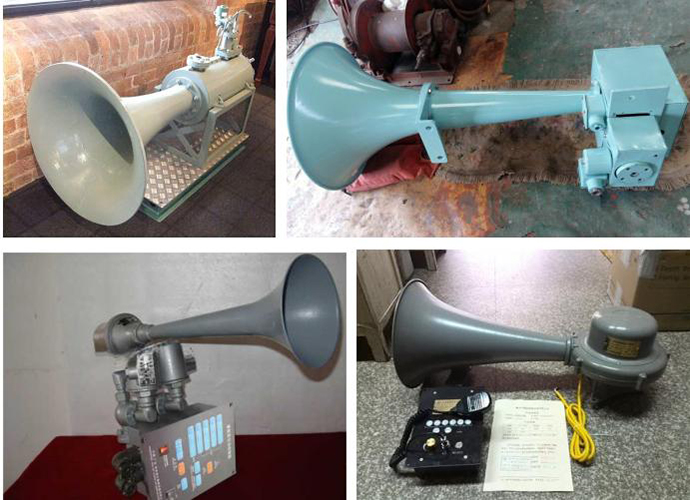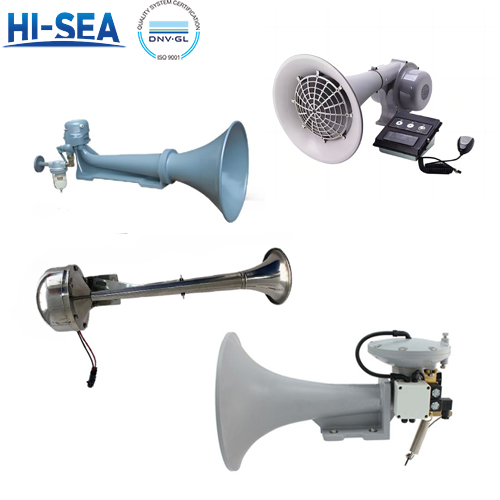
Marine Horn
Marine horns mainly includes air horns and electric horns. Marine air horns operated by compressing air using an air compressor, which is then released through a diaphragm or reed mechanism, creating the sound. Electronic horns use electronic components to generate sound without relying on compressed air. They often have adjustable sound characteristics and can produce different tones and patterns. We offer both of the two, and our products passed rigid test and meets international standards.
Overview
Application
Applied in a wide range of maritime activities, including navigation, collision avoidance, and signaling intentions to other vessels.

Working mechanism
Typically a marine air horn often involves a compressed air system that releases bursts of air through a diaphragm or reed mechanism, producing distinctive and attention-grabbing sound signals.
Electric fog horn is composed of two main parts, the sounding system and the motion control system. The sounding system is primarily made up of components such as an electric motor, driven gear, eccentric shaft, piston, piston cylinder, sounding body (sound film), resonator, horn, etc. The automatic control system is mainly composed of a microcomputer with a "single-chip micro-controller" as the core. Through the "Fog Navigation Automatic Control System" with the "single-chip micro-controller" as the core, human-machine dialogue is achieved.
Mounting
Marine horns are typically mounted in elevated positions on the boat, such as the mast or superstructure, to maximize their audible range and minimize obstructions. The location ensures that the sound signals are effectively transmitted over the water.





